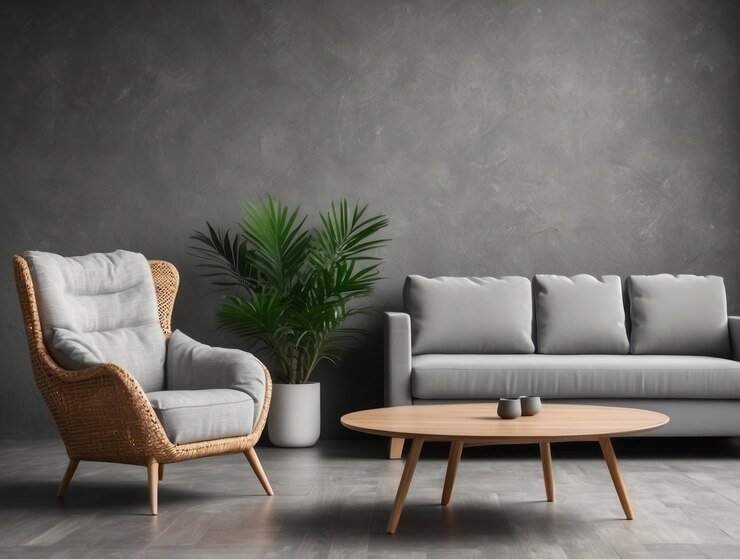Introduction:
Contemporary interior design is always evolving to reflect shifting societal preferences and way of life. Especially Modern interior design fashion frequently combines aggressiveness and elegance. They design visually striking rooms that are also useful. These trendy new trends for modern interior design are quite intriguing.
1. Modern Interior Design: The Essence of Modern Interior Design
Efficiency & simplicity describe modern interior design. Because Remembering that “form comes after function” is crucial when it comes to interior design. This guarantees that no item is compromised in terms of beauty in order to fulfill its intended function.
Minimalism: Embracing Simplicity
It emphasizes austerity and setting priorities for what is truly important. Clean lines, muted color palettes, and furnishings that blends in with the background are common features of minimalist decor.
Use of Layering Textures & Materials
Even though minimalism promotes simplicity, combining textures and different materials into a single space can provide visual interest. Combining matt and shiny metals and plush materials like velvet will create a dynamic space.
2.Maximalism and its Rise
Maximalist interior design contrasts with minimalism in a very vibrant way. This style incorporates rich colors, patterns, or textures that create an energetic and vibrant space.
Enjoy vibrant, vivid colors
Vibrant schemes of color are a hallmark of extreme design. Deep, rich colors work well. Examples of these colors are purple, dark blue, the gemstone sapphire violet in color, and emerald. Fabric, wallpaper, and artwork all feature these hues.
Prints with Bold Colors
Maximalism praises prints that are bold, whether they’re tropical designs like banana leaves and palms or intricate geometric patterns. These prints add character and vibrancy in any space.
Textural Richness
In maximalist interior design, textures play a crucial role. Soft velvet sofas with shaggy mats or satin cushions add layers of interest and luxury to the design.
Balance minimalism with maximalism
Many designers use a combination of minimalism, maximalist interior design and color to create spaces which are at once serene and lively. The balance is achieved when you start with a pure, neutral background and add vibrant, textured textures.
3. Allure of Japanese Interior Design
With its emphasis on natural materials, awareness, simplicity, & a clean look, japanese interior design is gaining popularity. Due to its emphasis on maximizing available space, this type of design performs effectively in tiny settings.
The Beauty of Wabi Sabi
Based on the Japanese concept Wabi-sabi this design style embraces impermanence, imperfection, and beauty. But It is frequently distinguished by the use of organic woods and historical Japanese components.
Incorporating Natural Elements
For a Japanese-inspired touch in your home, try using low wooden tables and cushions. The addition of plants or ceramics can take this natural vibe to the next level.
Considerations of Space
Take into account the dimensions of your area when considering Japanese interior design. A cramped, uncomfortable atmosphere can be avoided by using the correct size furniture and decor. The design of your home will be more functional and efficient if you measure the space precisely.
See Further Article: square coffee table
4. Modern Interior Design: Zen Inspired Interiors
Zen design emphasizes creating calm, functional spaces using a minimal approach. This design values open floor plans and natural material, which contributes to a serene and harmonious ambience.
Neutral Tones, Natural Materials
Zen interiors tend to be neutral in color, with shades of grey and white, combined with earthy colours. To enhance a natural atmosphere, wood and leather are common materials.
Sleek Furniture and Open Floor Plans
Zen interior design features open-plan floor plans with minimalistic furniture. Because There is a great sense of spaciousness, simplicity and openness. Polished metals and abstract artwork add an extra touch of sophistication.
Zen Design Elements in Asian Design
If you want to create a Zen style, use neutral colors and Asian design elements. Integrate Asian statues into your space along with leafy potted plants and simple artwork.
5. Modern Interior Design: Eclectic Approach
Eclectic interior design is about combining different textures, styles and patterns. It is more crucial to integrate these components into a logical area than to let anarchy reign.
Highlighting Interests and Personality
Eclectic furniture allows you express yourself by mixing and matching different items. Eclectic interior design may create a very unique style by fusing modern and classic elements.
Create cohesion by using color and theme
It is easier to combine designs when you have the same color theme. Pairing two or three elements with the exact same color scheme can help create an intentional look.
Adding Unique Accents
Make your room more personal by adding unique items. As focal points, large pieces wall art can grab attention and create conversation.
Conclusion
Modern interior design ideas exhibit a harmony between intricacy and simplicity. But You can create an engaging and personalized living space by embracing the simplicity of modern design or the vibrancy and serenity found in Japanese and Zen designs. If you understand and incorporate these trends into your living space, it will be both beautiful and functional.
Read More Article: Click Here
Faqs:
How much does interior design cost ?
Interior design costs can vary depending on factors like scope, designer expertise and location. Most interior designers charge $50-200 per hour. Others charge a flat fee of up to $ 10,000 or $1,000 for an entire redesign. Many designers work by a percentage of 10-20%. Fees for smaller projects or consultations are often less costly, but large, complex projects that require extensive redesigns will be more expensive.
How to get into interior design?
Begin by earning a certificate or degree in interior designing to develop the foundational skills and knowledge. Especially Develop a solid portfolio to showcase your experience and design skills. To gain practical experience, network with other professionals and look for internships or positions at entry level.




